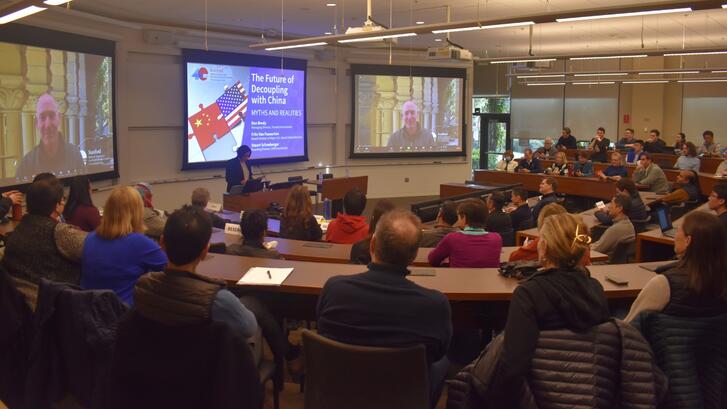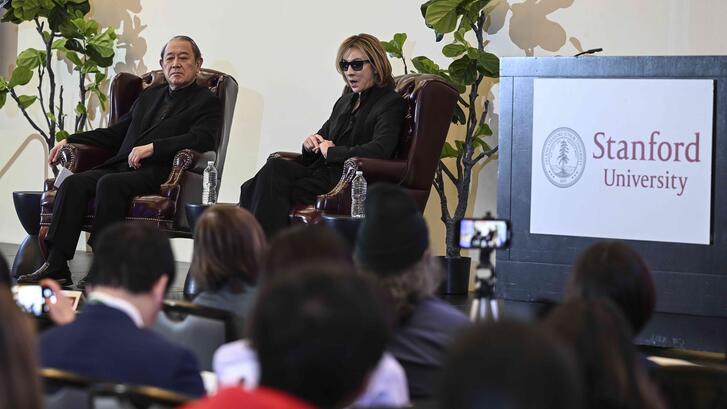Any number of policy proposals could help attract foreign talent. One example that could be implemented with relative ease in Korea is to draw foreign students into the labor market. Although the number of foreign students has surpassed 100,000, hosting foreign students is still primarily seen as a means of compensating for declining enrollment numbers at home. These students have the potential to make valuable contributions to Korea’s society and economy, but as some have noted, they are not always as skilled or qualified as their Korean counterparts. Moreover, the industries they seek to enter are not necessarily the ones where Korea needs foreign talent. This could be remedied by establishing a comprehensive system to nurture and train foreign students, starting from the admissions process. This can help ensure that foreign students play an essential role in Korea’s economy, especially in sectors that face critical labor shortages. Creating successful pathways to employment for foreign students will help attract even more students down the line.
The United States, the United Kingdom, Australia, Canada, and now Japan have already taken similar steps. In Japan, around 30,000 foreign students found jobs in 2019 after graduating. Assuming that around a quarter of the 300,000 foreign students in Japan graduated after full-time enrollment, the employment rate is roughly 40%. The goal is to reach 50% employment for foreign-born graduates, and the current success rate is already playing an important role in attracting more talented students from abroad. Korea should also put in place the institutions to enable this virtuous cycle and use global talent flows to its advantage.
Drawing highly skilled foreign workers into Korea’s economy will not only strengthen the overall talent pool, but also stimulate creative thinking and enhance productivity by raising cultural diversity.[27] In an industrial economy, it was vital to have a homogeneous and cohesive workforce that could quickly and efficiently achieve a given objective. We now live in an economy where creativity and innovation are the order of the day. There is an emphasis on the power of creative destruction. Korea remains one of the most homogeneous societies in the world, and Koreans have traditionally placed a high value on ethnic and cultural unity. Increasing diversity is an urgent and daunting challenge. An influx of global talent could help revitalize Korea’s economy and stimulate technological innovation. The recent surge of interest in Korean culture across the world could provide a crucial window of opportunity to attract foreign talent.[28]
In this vein, it is timely that the Yoon administration is preparing to establish a new agency to handle immigration policy. However, it will not be enough to revise the Immigration Act or pass laws to create new institutions. There must be a profound social and cultural transformation. In particular, Koreans must tear down the walls of their exclusionary “super-networks,” which are often built around common alma maters, shared regional backgrounds, and family ties. We must move beyond the emphasis on purity and homogeneity. Only then can Korea foster an open, inclusive, and tolerant culture where individuals of diverse backgrounds can freely come together and strive for new heights of innovation.
Two thousand years ago, all roads led to Rome. When in Rome, as the saying goes, people had to “do as the Romans do.” We now live in a world of complex global talent flows, where highly skilled individuals around the world cross oceans and continents to seek the most promising opportunities. If Koreans insist that foreigners “do as the Koreans do,” they will simply look elsewhere.
[1] Bruno Lanvin and Felipe Monteiro, eds., The Global Talent Competitiveness Index 2021: Talent Competitiveness in Times of COVID (Fontainebleau, France: INSEAD, 2021), https://www.insead.edu/sites/default/files/assets/dept/fr/gtci/GTCI-2021-Report.pdf. The full breakdown of Korea’s scores is on p. 146.
[2] Lee Hyo-Jin, “Gov’t Prepares to Set Up Migrant Policy Agency,” Korea Times, November 9, 2022, https://www.koreatimes.co.kr/www/nation/2022/11/177_339429.html.
[3] Gi-Wook Shin, “Walking a Tightrope,” Shorenstein APARC, November 16, 2022, https://aparc.fsi.stanford.edu/news/walking-tightrope.
[4] “The 100 Largest Companies in the World by Market Capitalization in 2022,” Statista, May 2022, accessed November 30, 2022, https://www.statista.com/statistics/263264/top-companies-in-the-world-by-market-capitalization/.
[5] “100 Largest Companies in the World,” Statista.
[6] Wie Young, “Korea’s Population Policy, Past and Present” [in Korean], Quarterly Journal of the National Archives of Korea 16 (2011): 72–74, https://www.archives.go.kr/archivesdata/upFile/palgan/1320392249078.pdf.
[7] Unless noted otherwise, all population statistics in this section are from KOSIS (Korean Statistical Information Service), Korea’s national statistical office, https://kosis.kr/index/index.do.
[8] The full definition of TFR given by the World Health Organization is “the average number of children a hypothetical cohort of women would have at the end of their reproductive period if they were subject during their whole lives to the fertility rates of a given period and if they were not subject to mortality.” See “Total Fertility Rate (per Woman),” WHO, https://www.who.int/data/gho/indicator-metadata-registry/imr-details/123.
[9] Children who were born in 2002, when Korea’s TFR first fell below 1.3, would have entered college in 2020.
[10] Wan He, Daniel Goodkind, and Paul Kowal, An Aging World: 2015 (Washington, D.C.: U.S. Government Publishing Office, 2016), https://www.census.gov/content/dam/Census/library/publications/2016/demo/p95-16-1.pdf.
[11] Paula Hancocks, “South Korea Spent $200 Billion, but It Can’t Pay People Enough to Have a Baby,” CNN, December 4, 2022, https://www.cnn.com/2022/12/03/asia/south-korea-worlds-lowest-fertility-rate-intl-hnk-dst/index.html.
[12] This is defined as the proportion of households among the elderly population (65 or over) whose disposable income falls below the poverty line. The poverty line is defined as 50% of the median household disposable income for the entire population. See also “Relative Poverty Rate of Elderly Is Highest Among OECD Member Countries,” Dong-A Ilbo, April 7, 2022, https://www.donga.com/en/article/all/20220407/3299509/1.
[13] Lee Kang-Soo and Park Ji-Min, “A Survey Regarding the Brain Drain among STEM Personnel” [in Korean], Biological Research Information Center, July 12, 2016, https://www.ibric.org/myboard/print.php?Board=report&id=2534.
[14] The 5-year stay rate counts foreign students who remain in the United States for five years after their PhD is awarded. This represents an increase from 10 years prior, when the stay rate was 22%. See “Stay Rates of Foreign Doctorate Recipients,” Oak Ridge Institute for Science and Education, https://orise.orau.gov/stem/workforce-studies/stay-rates-of-foreign-doctorate-recipients.html.
[15] “Survey of Doctorate Recipients: Survey Year 2017,” National Center for Science and Engineering Statistics, National Science Foundation, 2017, https://ncsesdata.nsf.gov/doctoratework/2017/.
[16] The 2016 IMD World Talent Report (Lausanne, Switzerland: Institute for Management Development, 2016), https://www.imd.org/contentassets/5665db95f401437a802c0d86aaa2dfb1/com_november_2016.pdf.
[17] Kyungsoo Choi, “Why Korea’s Youth Unemployment Rate Rises,” KDI Focus 88 (2017): 4. https://doi.org/10.22740/kdi.focus.e.2017.88.
[18] See Gi-Wook Shin, “Beyond Representation: How Diversity Can Unleash Korea’s Innovation,” Shorenstein APARC, June 30, 2022, https://aparc.fsi.stanford.edu/news/beyond-representation-how-diversity-can-unleash-korea%E2%80%99s-innovation.
[19] Adam Schiff and Charlie Bass, “Winning the Global War for Talent,” Glendale News-Press, March 10, 2012, https://www.latimes.com/socal/glendale-news-press/news/tn-gnp-xpm-2012-03-10-tn-pas-0311-congressman-adam-schiff-and-congressman-charlie-basson-winning-the-global-war-for-talent-story.html.
[20] Timothy B. Lee, “Gates to Congress: Microsoft Needs More H-1B Visas,” Ars Technica, March 13, 2008, https://arstechnica.com/tech-policy/2008/03/gates-to-congress-microsoft-needs-more-h1-b-visas/.
[21] Sarah McBride, “One Quarter of U.S. Tech Start-Ups Founded by an Immigrant: Study,” Reuters, October 2, 2012, http://reut.rs/Wduege.
[22] Jason Wiens, Chris Jackson, and Emily Fetsch, “Immigrant Entrepreneurs: A Path to U.S. Economic Growth,” Ewing Marion Kauffman Foundation, January 21, 2015, https://www.kauffman.org/resources/entrepreneurship-policy-digest/immigrant-entrepreneurs-a-path-to-us-economic-growth/.
[23] Shin, “Beyond Representation.”
[24] 3D jobs are those that are dirty, dangerous, and demeaning (or demanding/difficult).
[25] Yuta Koyanagi, “More Japanese Companies Hire Talent from Overseas Universities,” Nikkei Asia, January 30, 2019, https://asia.nikkei.com/Business/Business-trends/More-Japanese-companies-hire-talent-from-overseas-universities.
[26] Kim Dong-Yoon, “Baidu’s Li Yanhong to Silicon Valley Developers: If You Don’t Like Trump, Come to China” [in Korean], Korea Economic Daily, November 20, 2016, https://www.hankyung.com/international/article/2016112020801.
[27] Shin, “Beyond Representation.”
[28] See Gi-Wook Shin, “Will Hallyu Swell to a Tidal Wave? Korea’s Future as a Cultural Superpower,” Shorenstein APARC, August 1, 2022, https://aparc.fsi.stanford.edu/news/will-hallyu-swell-tidal-wave-koreas-future-cultural-superpower.

























